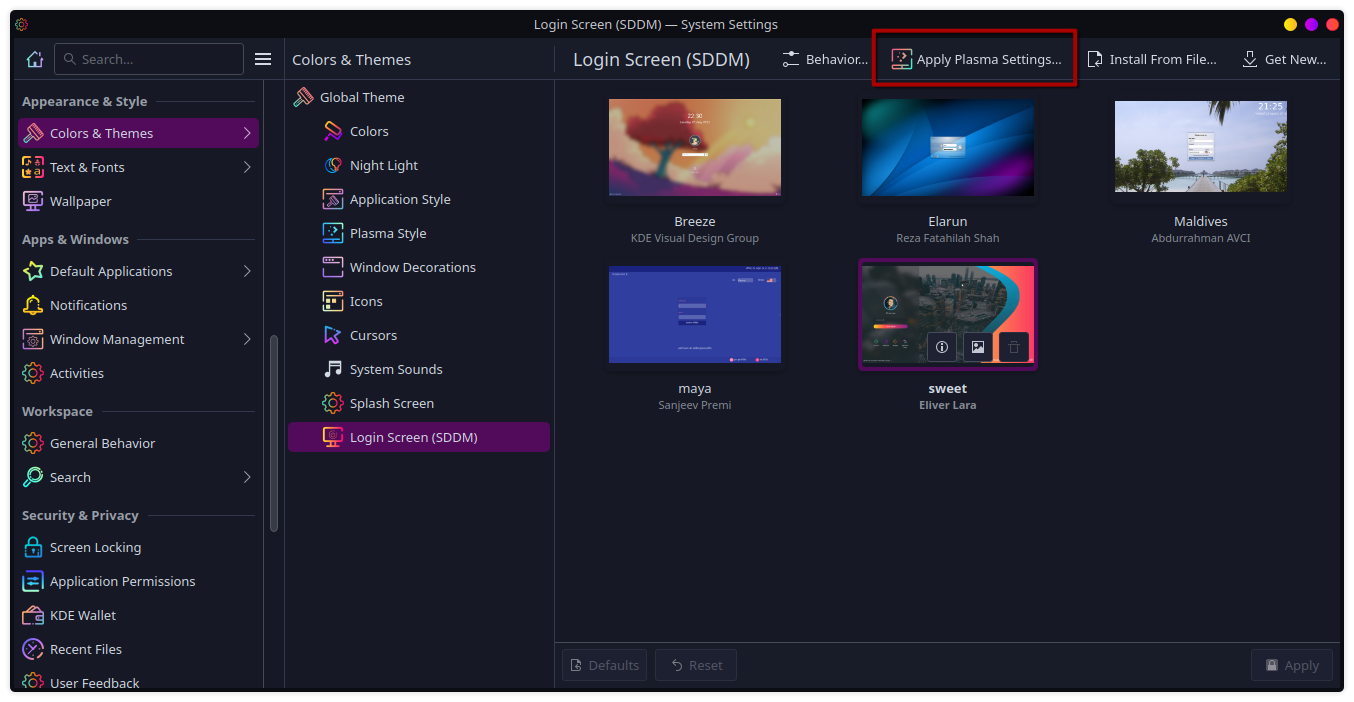Not sure if you’re a troll, but if you’re serious, nothing I say is going to change your mind, so I won’t bother.
- 2 Posts
- 70 Comments
If you’re using Wayland, you can go to Settings -> Colors & Themes -> Login Screen (SDDM) and click “Apply Plasma Settings…”

If you’re using X11, it looks like you’ll have to resort to hacky scripts, unfortunately.
Source: https://discuss.kde.org/t/how-to-change-monitor-layout-and-orientation-in-sddm/3377

 5·2 months ago
5·2 months agoOh nice! I just use Lutris, but options are always good.

 1·3 months ago
1·3 months agoI disagree, it’s a statement of fact. There’s nothing inherently wrong with that fact that you’re lazy about fiddling with computers. I’m lazy about certain things in my own life.
But it’s pointless trying to convert lazy people to Linux when it requires an effort level above 0 and they don’t want to put in anymore than that.

 1·3 months ago
1·3 months agoCool, you’re lazy, gotcha.

 1·3 months ago
1·3 months agoNo, I literally had to add one change to the game launch properties one time. It took me probably 3 minutes of googling and following instructions. I wouldn’t call that “a bunch of fucking shit”.

 1·3 months ago
1·3 months agoCool, me too.

 1·3 months ago
1·3 months agoHelldivers 2 works almost perfectly on Linux. I had to nest it in a gamescope session to fix some weird mouse issues, but that was it. I dual-boot Windows and I’ve never even launched it there.

 18·4 months ago
18·4 months agoI could go in-depth, but really, the best way I can describe my docker usage is as a simple and agnostic service manager. Let me explain.
Docker is a container system. A container is essentially an operating system installation in a box. It’s not really a full installation, but it’s close enough that understanding it like that is fine.
So what the service devs do is build a container (operating system image) with their service and all the required dependencies - and essentially nothing else (in order to keep the image as small as possible). A user can then use Docker to run this image on their system and have a running service in just a few terminal commands. It works the same across all distributions. So I can install whatever distro I need on the server for whatever purpose and not have to worry that it won’t run my Docker services. This also means I can test services locally on my desktop without messing with my server environment. If it works on my local Docker, it will work on my server Docker.
There are a lot of other uses for it, like isolated development environments and testing applications using other Linux distro libraries, to name a couple, but again, I personally mostly just use it as a simple service manager.
tldr + eli5 - App devs said “works on my machine”, so Docker lets them ship their machine.

 12·4 months ago
12·4 months agoThat work has already started with Fediseer. It’s not automatic, but it’s really easy, which is probably the best we’ll get for a while.

 12·4 months ago
12·4 months agoI’m sorry I didn’t call out every exception to the rule. Obviously, if you do illegal things on my instance, I will care. I kind of thought that was a given, to be honest.

 22·4 months ago
22·4 months agoI run an instance. I promise, I have literally 0 care about who you are. I have much more productive things to do with my time.

 36·4 months ago
36·4 months agoThat sounds like the default GitHub boilerplate message, to be fair.

 2·4 months ago
2·4 months agoStep 3 is optional. mkinitcpio will just issue a warning, and any kernel packages you have installed should eventually update their presets.

 31·5 months ago
31·5 months agoMy ISP says my IP is technically dynamic, but it hasn’t changed once in the 6 years I’ve had their service. But that’s for the best, since they’re the only choice for symmetrical gigabit and their only option for static IPs is for business accounts.
So I continue to trust that they won’t change it. Fingers crossed.

 22·6 months ago
22·6 months agocomplexities of Distrobox
they unironically say in comparison to the arcane language of fucking Nix, lmao

 9·6 months ago
9·6 months agoIn addition to what’s been mentioned, Bazzite also updates the kernel and graphics drivers more often than SteamOS, so yes, while things are slightly more likely to break every now and then, there are some decent performance gains to be had.

 14·6 months ago
14·6 months agoI love Bazzite, but I wish they would fix the no audio after wake on the OLED. I encountered it often while running the testing release, so I went back to SteamOS to wait for a stable release with the fix. Imagine my disappointment when they released a new stable version with the bug still present. :(
 2·7 months ago
2·7 months agoI started my homelab with a small form factor PC (not a NUC specifically, but similar). They can be very capable servers, depending on specs and your needs.
As for towers, you can do standard consumer workstations, too. I game on PC, so when I build a new rig every 3 or 4 years, my old one goes in the closet. Sometimes I just add it and have another server, sometimes I donate the current server to a friend or school. Point being, you don’t have to have a Threadripper CPU and ECC RAM to run a server.
That being said, if you plan on hosting critical services or non-critical-but-public services that you want to have high availability and stability, it might be a good idea to upgrade to enterprise hardware eventually. But definitely not needed if you’re just starting out or running personal, non-critical stuff.

Literally yes. And you don’t even need to know the exact pixel resolution of the TV.
Edit: Here are the problems with you “Wayland isn’t good enough” people.
First, you don’t use Wayland, so you don’t even know if it’s fixed whatever weird issue you encountered with it before or if it supports a niche use case, for example.
Second, Wayland won’t get good enough for you until you start using it and reporting bugs. You think X11 was a bed of roses when it first started? Or do you think they bumped the version number 11 times for fun?